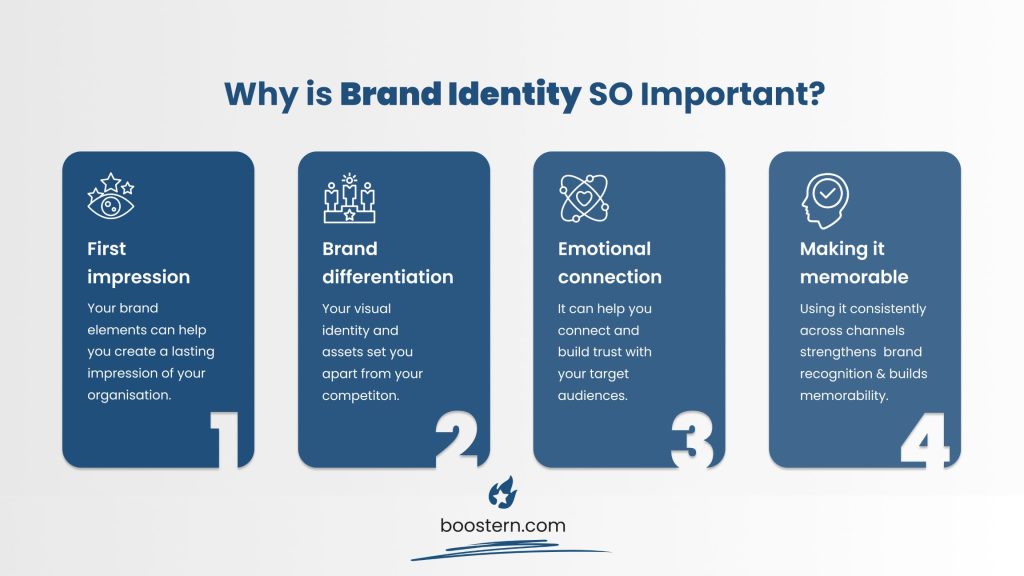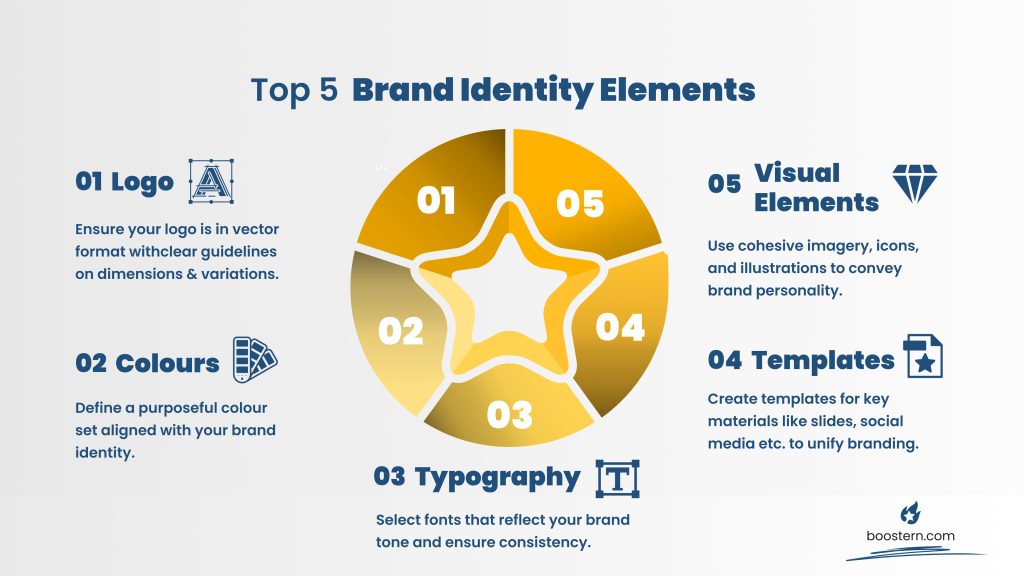How to Stand Out With a Memorable Brand Identity
Written by Mate Tagaj
6 min read
Published on Apr 10, 2025
Updated on Apr 24, 2025
When there are hundreds of organisations battling it out to grab peoples’ attention, it’s your brand identity that could make all the difference and help you stand out in the crowd through a distinctive visual branding.

In reality, your brand should be a representation of who you are, what you do, and what you stand for. You may know all of these things already, but finding a way to communicate this to your target audiences is another story.
In this article, we’ll dive into the core foundations of building a brand identity to help your organisation become memorable, inspirational and powerful.
The importance of brand identity
It’s easy to describe what your organisation does in words, but your brand identity should extend beyond just words. Without a doubt, visual elements like your logo, colour palette, and imagery play a crucial role in shaping perception and building positive recognition. Here’s why strong visual branding and graphic design is essential:

- First impressions are important: Most people won’t sit down and read your whole ‘About Us’ page. In fact, it’s the visual elements that form the first impression of your organisation. Considering that, according to the latest statistics, first impressions are 94% design-related and 55% of brand impressions are based solely on visual aspects, a cohesive and professional visual branding and graphic design can really set the tone for you.
- Brand differentiation: When there are lots of other organisations that people could support, your visual identity could set you apart from the competition.
- Create an emotional connection: Your logo, colours, fonts, icons, shapes, illustrations and imagery are powerful storytellers that can create a lasting impression. By using these correctly, you can build trust and an emotional connection with your target audiences.
- Make your organisation memorable: A consistent visual approach across all platforms – website, social media, communications materials – reinforces brand recognition and builds memorability.
Elements of a strong brand identity
Every great brand has a brand booklet with basic ingredients. Here’s what every brand guide should include:

1. Logo: Your logo is your visual signature; make it available in a scalable vector format to ensure a sharp, consistent look when it is resized for different uses across platforms. Furthermore, don’t forget to include details in your brand guide on the logo usage, logo dimensions, stylisation with different variations and logo colours for consistent use.
2. Colour palette: A curated set of colours with a meaning and an intention should match your brand’s image. You could also read about the psychology of colour and HubSpot’s guide to brand colours to figure out which colours are best suited for your organisation.
3. Fonts: Use fonts that support your brand, match your logo usage, and provide unity across your brand assets.
4. Templates: Letterhead, business card, social media posts, presentations, posters etc. must all ensure consistency in visual branding across all communication platforms. Having templates ready for each will significantly help you stay on brand and improve your overall efficiency and brand recognition.
5. Imagery, Iconography & Illustrations: High-quality, cohesive images, unique illustrations and icons that reflect your brand personality are essential.
Need Help?
Do you need professional help to design an amazing logo, brand guideline and/or brand assets for a new project or campaign? Or would you like to refresh your organisation's current brand identity?
Tips for creating your brand identity
A strong brand identity is not just something you can come up with in a few hours. It takes a lot of time and effort. After all, it is a powerful tool that can define your entire organisation.
You may be starting from scratch, or you may be considering refining your visual identity to maintain relevance.
Either way, here are some key steps to guide you through the process:
1. Understand your target audience
Effective branding decisions should always be based on your target audience. Think about the demographics of your core target groups; how old are they, and what are their values, behaviours and even visual preferences?
By understanding how your audience perceives the world, you can adjust your visual identity to align better with their expectations.
2. What makes your organisation special?
What sets your organisation apart? Focus on what makes you special, and make this the core of your brand identity.
You should also have a look at what your competitors are doing for a bit of inspiration, but don’t just copy what they’re doing! Look for things that they are doing well, and come up with a way that you can adapt this to your own logo and brand identity.
3. Make incremental changes over a long period of time
Building a strong visual identity takes time. You should definitely hire a professional to get help in the design of your logo, the collection of colour palettes, fonts, and design elements initially. Nevertheless, you shouldn’t forget to gather visual inspiration on the go, refine your ideas, and get feedback from various stakeholders to implement changes on your branding later on.
Your brand booklet will be a go-to document for anything that needs to have a design and needs to stay on brand. Even though staying consistent with the established brand identity is crucial, this doesn’t mean that it must remain static and it cannot be improved over time.
4. Future-proof your brand
While staying trendy can be tempting, avoid chasing short-lived design trends when establishing a brand identity. Instead, focus on creating a visual identity that is adaptable and can work across different contexts and situations. This will ensure your brand guide remains relevant and impactful for the long term.
To see this in action, check out our YPN Branding project case study.
How to align your brand identity with your brand voice
Your brand is more than just visuals; it’s your voice and how you communicate with your audience. To create a strong brand, everything should be aligned and make sense, so don’t forget to also document your brand voice guidelines to help your writers and editors to also stay on brand.
Here’s how to ensure your writing reflects your brand identity just as well as your visual branding and graphic design:
- Find your personality: Imagine your brand as a person. Are they friendly and approachable? Or are you authoritative and reliable? Identifying your brand personality helps you write in a way that feels natural and authentic.
- Be clear: Distill the essence of your brand into a concise message. What do you do exactly, and why should your audience care?
- Be authentic: People connect with genuine communication. Therefore, don’t try to be someone you’re not. Use language that feels real and relatable, reflecting the true personality of your organisation.
- Keep it simple: Avoid jargon and overly complex sentences. Instead, use clear, concise language that’s easy for your audience to understand.
Start building your brand
Hopefully, this article has given you all the tips and tricks you need to create a logo and brand identity for your organisation, project or campaign that’s not just visually appealing but also strategically created to resonate with your audience.
Remember, your brand identity is what will set you apart from other organisations and connect you with your target audience. It’s also something that should constantly evolve and adapt, so regularly revisit your brand’s core values and messaging – don’t be afraid to adapt your visual branding and graphic design, as well as your brand voice guidelines, to maintain relevance and connection
